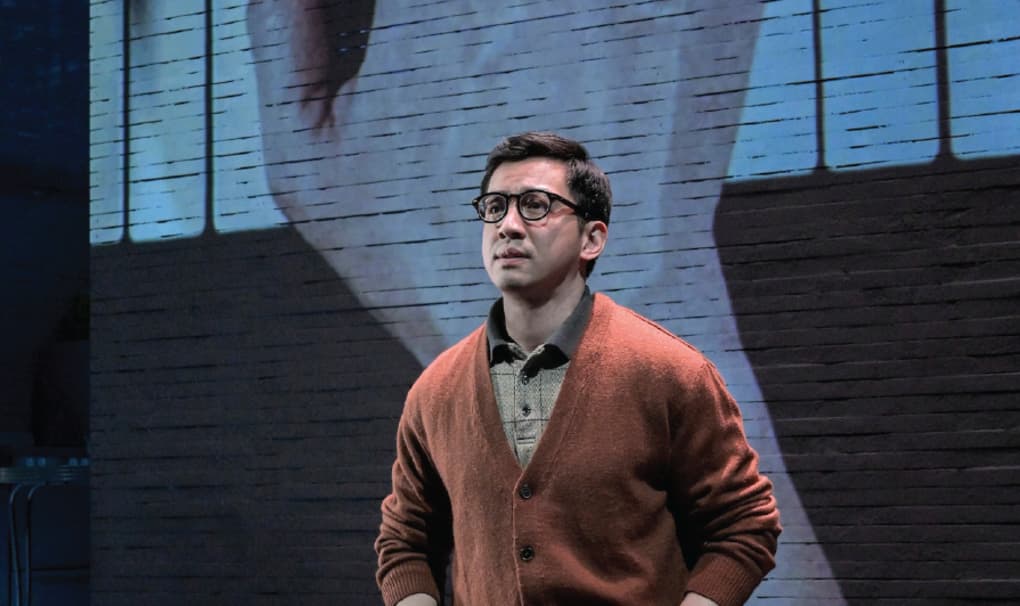

Fefu and Her Friends was written by María Irene Fornés in the 1970s, takes place in the 1930s, and A.C.T. is producing it in 2022, so it’s evocative of many time periods and feels unapologetically, now. For my sound design on this production, I have two distinct challenges that this play poses: how to help keep the play rooted in its time period, while not turning it into a “period piece” that feels distant from today’s audiences, as well as keeping the audience engaged in what we expect are extended transitions between scenes.
Director Pam MacKinnon and the artistic, production, and front of house teams have turned the Strand Theater into Fefu’s house, utilizing the entire building as a variety of playing spaces. The play has an unconventional structure, split into three parts. Part I takes place in the main Rembe Theater as we watch what appears to be a straight-forward period piece set in Fefu’s gorgeous living room (set design by Tanya Orellana).
At the close of the Part I, the audience is split into four sections. Each section travels to a different location in the Strand Theater, and we peer into different areas of Fefu’s house as the four scenes of Part II take place simultaneously. The audience cycles through all four scenes of Part II, we take an intermission, and then gather back in the main theater for the final Part III.
As the audience is gathering to their seats before the start of the show, I have a mix of 1930s music largely fronted by women vocalists that evokes the time period, hints at themes in the play, and contributes to the general pre-show buzz of communal energy the audience experiences.
When Fornés explodes apart the theatrical structure and we start guiding the audience around the building to Fefu’s study, kitchen, bedroom, and garden, Pam and I decided to explode the sonic convention we have already set by using modern pop music, played loudly—something exciting that makes you want to stand up and move and be inquisitive and exploratory. In this first transition, we are using music from Bay Area band Xuxa Santamaria, and LA recording artist MNDR.
Then, after each of the four Part II scenes, as audience moves from space to space, taking stairwells and back hallways, Pam came up with the brilliant idea of musically moving backwards through time, with all music fronted by amazing women, so that in each of the Part II transitions, we visit a couple of decades, starting now, and moving back to the 2000s/1990s, 1980s/70s, 1960s/50s, and then finally during intermission we travel back to the 1940s and 30s to bring us back into Fefu’s living room for the final part of the play.
It has been a hugely fun challenge to discover music that honors Pam’s idea, and speaks to the themes in the play, as well as helps to bring additional communal energy to our audience as they explore Fefu’s house and peer into the inner lives of the women in Fornés’s world.
An interesting side effect of this convention we’ve used for Part II, is that while the music that frames the scenes stays consistent for each part of the cycle, the music you hear after watching a particular scene will not be the same music another group hears when they have watched the same scene. The time travel stays consistent, so in round three, for instance, the music is from the 1980s and 1970s, but you may have just watched the Study, while another group has just watched the Garden, and while both groups hear the same music, that music may have different resonances in framing each of the two scenes. So, come back and see the show again and you will get a different experience each time!
I don’t want to spoil the musical choices any more than I have already, so instead I have put together a Tidal playlist of entirely different music inspired by our show that takes a similar journey backwards in time from now to the 1930s. I call the playlist “Fefu and Her Friends (and their friends).” Enjoy this playlist before you come see our show, and/or after you watch the show, and I guarantee you will find resonances in the themes and characters in this amazing music that spans the decades.
Enjoy the show—and let the music move you.
Jake Rodriguez
Sound Designer, Fefu and Her Friends

